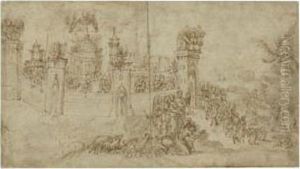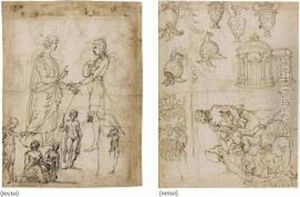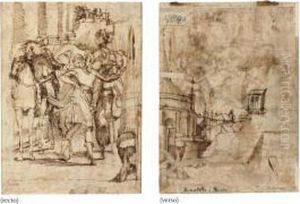Vincenzo Tamagni Paintings
Vincenzo Tamagni, also known as Vincenzo da San Gimignano, was an Italian painter of the Renaissance period, born in 1492 in San Gimignano, a small town in the province of Siena, Tuscany. Not much is known about his early life and training, but it is believed that he may have been a pupil of the Florentine painter Domenico Ghirlandaio, one of the leading artists of the time, or possibly of Ghirlandaio's famed student, Michelangelo Buonarroti. Tamagni's style suggests that he was exposed to the works of these masters and their emphasis on harmony, proportion, and the human figure.
Tamagni's work was primarily religious in nature, reflecting the predominant themes of the Renaissance. He was active mainly in his hometown and in Rome, where he was influenced by the art of Raphael and Michelangelo. His paintings are noted for their vivid color, graceful composition, and the clarity of form. One of his most significant works is the 'Resurrection', a fresco in the San Gimignano Cathedral, which showcases his skill in creating dynamic compositions and his understanding of human anatomy.
In Rome, Tamagni worked on various projects in the Vatican and is known to have participated in the decoration of the Vatican Logge, which were designed by Raphael. He also painted a series of frescoes in the Santa Maria della Pace church in Rome, where his work is characterized by a Raphaelesque grace. Tamagni's exposure to the Roman art scene and the works of the High Renaissance masters greatly influenced his artistic development, leading to a refinement of his technique and a sophistication in his approach to narrative and decoration.
Despite his talent, Vincenzo Tamagni remains a relatively obscure figure in Renaissance art history, overshadowed by the towering reputations of his contemporaries. He died in 1530, and while his exact date of death is not well-documented, it is known that his career was cut short by his premature death. His existing body of work, though limited, contributes valuable insight into the dissemination of Renaissance artistic ideals beyond the major centers of Florence and Rome, particularly into smaller towns like San Gimignano, where local artists like Tamagni played a vital role in decorating civic and religious spaces.


